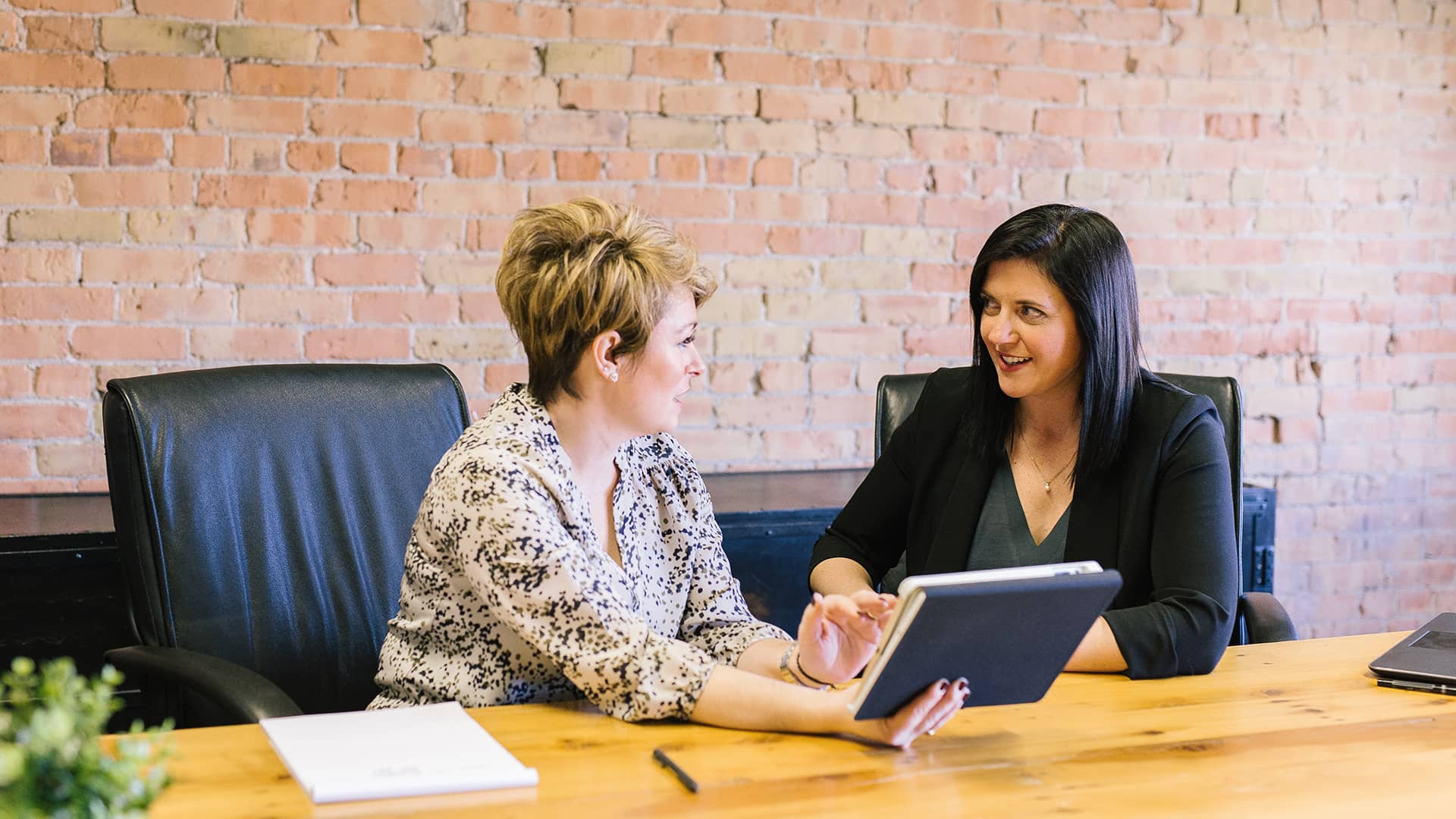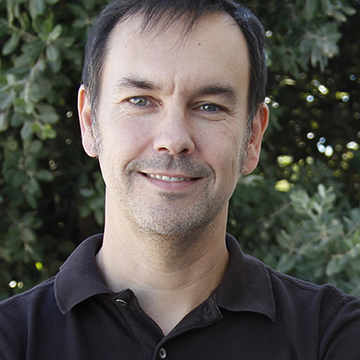
Meet Prof João Murta-Pina, our Action Chair!
What got you into supercondutivity? How did you become interested in this field?
After joining NOVA School of Science and Technology in the 2000s, my former boss, Prof. Leão Rodrigues, told me that our group (only four people at that time) was involved in two projects – one in the field of robotics and the other in superconductivity – and that I should select one to work on. Having come from the field of robotics and automation, and knowing nearly nothing about superconductivity, I honestly thought about selecting the first one. Yet, as was usual in those times, I had no chance to choose and I was assigned to the project of superconductivity, which I must say that I have absolutely no regret whatsoever.
In fact, this project was part of a Research Training Network supported by the European Union, called Supermachines. Here, I had the opportunity to meet people such as Xavier Granados, Xavier Obradors, Philippe Vanderbemden, David Dew-Hughes, and Archie Campbell, among others, but unfortunately, due to my teaching tasks, I have to say that I have not benefited from the network as I could or should have.
Nevertheless, Supermachines allowed me to spend some time abroad, at the University of Oxford, where I got in contact with more researchers in superconductivity and all of this together was a precious learning opportunity. It also allowed me to participate in training schools which were tremendous occasions to learn more and more.
One of the goals of the network was to develop a superconducting machine, and our group was related to electrical motors, so that was my very first interest in the field besides levitation (which I think is natural in superconductivity). After that, my interests broadened to fault current limiters and other power applications.
What is your personal interest in the COST Action?
Having nearly no access to funding for superconductivity research, I soon realised the power of networking, particularly with the group of Alfredo Álvarez. Although our groups are in Portugal and Spain, we are only two hours away by car, and by sharing our limited budgets and manpower we were able to build a very fruitful collaboration.
I was also able to join a previous COST Action on energy storage, which allowed us to send a Ph.D. student abroad for a three-month mission, to the group of Fedor Gomory and Enric Pardo. Here we started working on AC losses, something new to us then.
So, networking really is a powerful tool for advancing knowledge, as we all know, particularly when you belong to the so-called Inclusiveness Target Countries. I truly feel self-fulfillment in being able to contribute to providing the means for such networking.
What is your biggest achievement?
That is a very difficult question, as I don’t consider myself to have made a great achievement, but rather several intermediary accomplishments: attracting several MSc and PhD students to a field that is hardly relevant for their professional careers outside academia; contributing to establishing one of the two Portuguese groups in applied superconductivity; winning a national project to develop a research portfolio in artificial intelligence in the context of AC losses; being selected to organise EUCAS 2025; and, obviously, having coordinated the successful application for Hi-SCALE.
Curiosity bonus: how do you spend most of your time when you are not in the lab/office?
Unfortunately, my university responsibilities currently leave me very little time off, which I use mostly for family and friends. Having been a member of a typical Portuguese academic band (called Tunas, which in Portuguese is not a fish!), music is a long-time passion that is always present.
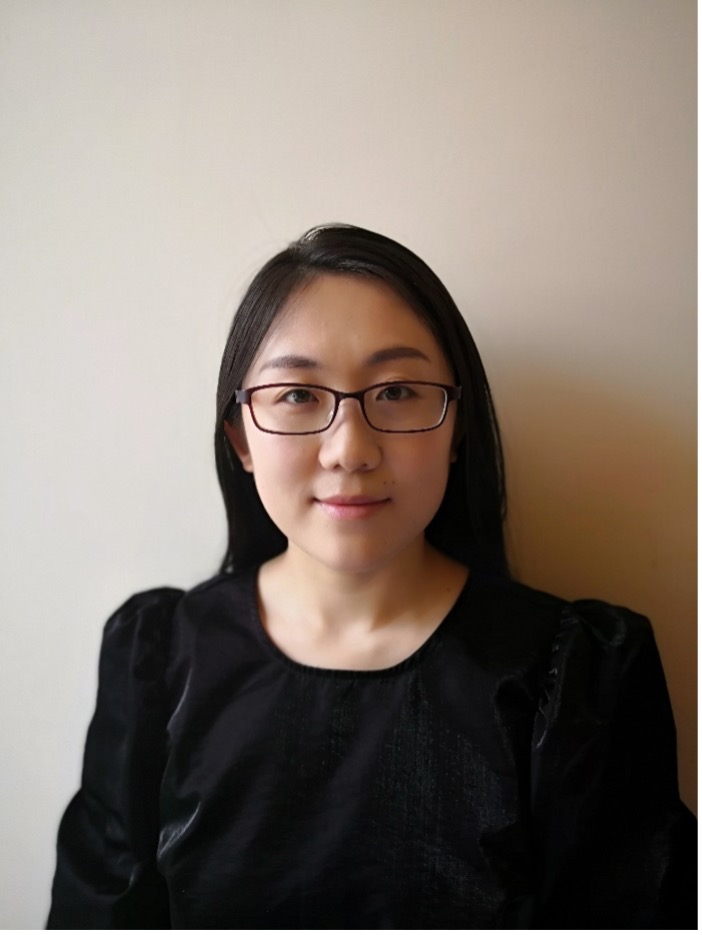
Meet Dr. Wenjuan Song, one of our members who was recently appointed Lecturer at the University of Glasgow!
What got you into superconductivity? How did you become interested in this field?
Superconductivity first entered my sight when I was a Master’s student when I heard senior students in the lab talking about how superconductors can revolutionize the power system and its apparatuses, by reducing their losses and weight significantly. This was very exciting for me to hear as a student in the electrical enginnering.
What took me one step further into superconductivity was that I had a chance to assist a senior student carrying out cryogenic testing of a superconducting coil using liquid nitrogen. This was amazing, inspirational, and an unbelievably awesome experience where I could closely see and touch the superconductors, learn how to operate them in a cryogenic environment, and learn about their unique advantages in electrical engineering.
Meanwhile, I searched for some academic papers about superconductivity, read online resources, and also had more chats with senior students and my Master’s supervisor to have a bit more understanding of this theme.
It was a process that planted the seed of superconductivity into my mind and finally encouraged me to pursue my PhD in this field. Fortunately, it proved to be a wise and right decision for me to research applied superconductivity. I am thankful for and passionate about this career journey and I look forward to advancing superconductivity into more new opportunities, in the broad transportation sector.
What is your personal interest in the COST Action?
I am interested in and have engaged with several sub-sections of the COST Action, all related to “modelling techniques for superconductors,” including:
- Data-driven modelling for superconductors
- Equivalent circuit model
- T-A formulation
I have contributed to the following research work:
- Second co-author of the topical review article on the T-A formulation (published recently)
- Co-author of an invited topical review paper on artificial intelligence for superconductivity, under “data-driven modelling for superconductors” led by Dr Mohammad Yazdani-Asrami
- Co-author of a research paper on an equivalent circuit model
In addition, I am very interested in engaging with any other volunteer work to help organize, disseminate, and manage activities, aside from academic contributions.
What is the topic of your research and what are your future plans?
My research interests cover different areas, including superconductivity in aviation, power & energy, and health care sectors.
In detail, my current and future research topics are protection solutions, transmission lines and connecting units for electrically powered aircraft system; high efficiency and low loss superconducting applications; and artificial intelligence for superconducting components in modern cryo-electric aircraft.
Curiosity bonus: how do you spend most of your time when you are not in the lab/office?
I joined the University of Glasgow, Scotland, UK, as a lecturer/assistant professor in electrically-powered aircraft early this year, so I am quite busy with many new tasks/challenges in order to fit in this new role.
However, once I get some free time, when I am not in lab/office, I enjoy walking in parks and gardens and along riverside walking tracks, since they are really beautiful and I feel relaxed while walking. I often like to travel during public holidays to explore the amazing and fantastic landscapes of Scotland. They never disappoint me.
My other hobbies are reading books and watching movies.

Meet Dr. Harold Ruiz
What got you into superconductivity? How did you become interested in this field?
The first time I heard about superconductivity was when I was 18 years old in a third-year module of Solid-State Physics in the University I got my BSc back in Colombia. Since that time, I certainly found the topic interesting as it held and still holds the record of Nobel Prizes awarded within the same subject. In fact, I started on quite theoretical matters of superconductivity at quite a young age, particularly on strongly electron correlated systems. My first real approach being during the writing of my BSc monograph which focused on reproducing all the maths and second quantization mechanics that was behind the published Nobel laurate lectures of Bardeen, Cooper and Schrieffer in 1972. This was a remarkable challenge as I did not have a formal training in Quantum Mechanics, or at least not at the level that was required, but fortunately I always preferred to learn from books than from formal lectures. This was maybe what make me to define a career not only in superconductivity, but also with clear tendencies to theoretical matters, which might be not that surprising. And I say this because, in the 2000s a country like Colombia did not have at all a solid research infrastructure that could have allowed me to do some attempt to research on the costly experimental aspects of superconductivity. Things might be different now, but when you come from a developing country like mine, and the only way to continue with further studies is to get the money to pay for the 1st semester of your career, and then to work out yourself to get a scholarship, the theory of superconductivity was my ticket to go forward. In that way, I then got later on a first MSc in condensed matter physics at the National University of Colombia, where I managed around 2008 to publish what I would say were my first attempts to do sound research. From there I got a series of scholarships in different countries for continuing with my PhD, from where I decided to accept and stay at the University of Zaragoza in Spain, a decision I consider was the best. There I continued with my research on microscopic aspects of superconductivity, publishing in 2009 my first Phys. Rev. B paper on this topic. That is an important year for me because it is also when I decided to move from the purely theoretical and microscopic aspects of how a couple of electrons bind together to form superconductivity, to how we use superconductors in a more practical manner, e.g., in power cables and electrical machines. This is a completely different world if it is seen from the theoretical, computational, and maths required. In fact, it is different because in what we call applied superconductivity, we simply work at different length scales. When we talk about superconducting cables, pinning mechanisms and so on, and I mean with this, from “materials to devices,” we do not necessarily need to call for a quantum statistic to understand a phenomenon. We just simply call for classical physics such as Maxwell’s equations for their electrodynamics or Newton’s laws for their thermodynamics, with of course certain constraints to resemble the strong nonlinearities that the different superconducting phenomena can exhibit. However, despite the macroscopic theory has a fairly simple background and can be learnt in very few days – opposite to the microscopic theory which involves a reasonably advanced level of quantum mechanics but relatively smooth computational algorithms – it is the strong nonlinearities in the material properties of superconductors what make then so difficult to tackle from a computing point of view. This is what has kept me interested in this, commonly looking for intriguing experimental results from my colleagues around the world, where not only a computational but also a sound physical explanation is needed for understanding and further optimizing different superconducting applications.
What is your personal interest in the COST Action?
Networking. Not only does the COST Action increase the visibility of your own research to a wider community, but gives an easily accessible route to expand and contribute in other areas of research where your skills fit. This is certainly important for the early career researchers that are behind us, such as postdocs and PhD students, where it is part of our duty to open these paths of communication and collaboration to them. So, probably my main interest is to help the ECRs in my group and other groups, as I consider that is the most rewarding element of a COST Action.
What is the topic of your research and what are your future plans?
Well, that is relatively varied and to be honest, from time to time it depends mostly on the availability of research funding. So, a fair answer to this question would be on any topic of superconductivity, mainly on superconducting applications, where my theoretical insight could be a plus. It could be on aspects related to the performance of either the large set of alternatives for wires and cables that we have
nowadays, or on their actual electromagnetic, thermal, or even mechanical response for helping in the designing and optimization of large-scale applications and other experimental setups.
Curiosity bonus: how do you spend most of your time when you are not in the lab/office?
At home, definitely at home with my wife and little daughter, going to the park, travelling, or doing whatever I can to enjoy parenthood.
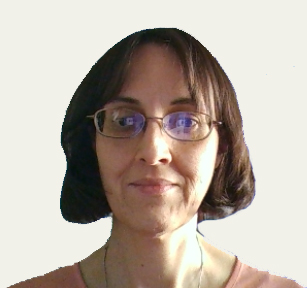
Meet Prof Dr. Laura Gozzelino
What got you into superconductivity? How did you become interested in this field?
I got in touch with Superconductivity when I was searching a topic for my master’s thesis. I was interested in a topic concerning semiconducting materials because I had already taken a course on that subject, but one of my professors suggested me to join a group working on superconductivity and so I did. I had almost no knowledge of this subject, but I was immediately fascinated. Actually, my thesis work was on the study of the effects of proton irradiation on the electromagnetic properties of YBCO samples. This gave me the opportunity to work with equipment cooled using cryogenic liquids, reaching temperatures that, until then, I had only read about in books. In addition, the implementation of the irradiation experiments gave me access to Italian large-scale irradiation facilities, making topics like particles or accelerators come true. Therefore, I immediately seized the chance to continue this activity during my PhD.
What is your personal interest in the COST Action?
I am engaged in both WG1 and WG2 activities. In particular, I am mainly interested in increasing the knowledge of the electromagnetic properties of HTS materials and
in their improvement through artificial pinning center additions. The development
and the use of numerical tools for the analysis, design and optimization of HTS
devices such as shields or magnets is also among my main interests. Moreover, considering that the development of truly competitive superconducting devices is very expensive, I am absolutely convinced that the winning approach is collaboration among different groups willing to share skills and experimental and computational facilities. This COST Action
is providing me the opportunity to establish new collaborations and get in
touch with new research groups.
What is the topic of your research and what are your future plans?
My research activity is mainly focused on the study of the electromagnetic properties of cuprate superconductors, MgB2 and iron-based superconductors, aimed at both fundamental and application-oriented aspects. In more detail, for the last few years, I have mainly worked on developing bulk magnetic shields and permanent magnets and I have investigated the modulation of the electromagnetic properties of iron-based superconductors via the controlled addition of defects induced by particle irradiation. The study of the radiation damage in superconducting materials and in other materials of technological interest for their use in radioactive environments (such as future nuclear fusion plants) is another topic of my research activity. In the near future, I am going to continue the above mentioned research activity exploring new layouts (for shields and permanent magnets) and new iron-based superconductors, also improving the performance of the instrumentation in my group’s labs.
Curiosity bonus: how do you spend most of your time when you are not in the lab/office?
Unfortunately, I do not have much free time
because quite often I take my work home. Anyway, when I can, I like to spend my
free time reading. I also really like to visit new places: every year, during
the summer holidays I spend some days to visit a corner of Italy or of Europe.
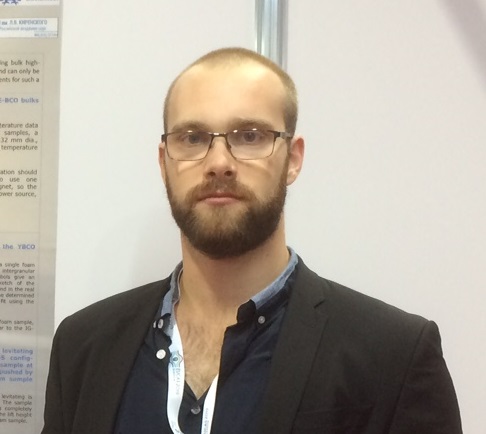
Meet Quentin Nouailhetas
What got you into superconductivity? How did you become interested in this field?
I first met superconductivity
during my master’s degree – I was studying large scale facilities such as
particle accelerators or TOKAMAKs where superconductivity plays a central role.
Then, along with practical and lectures, I realized how interesting the field
of superconductivity is, particularly the experimentation side. So, I decided
to continue in this field through an internship in the characterization of
superconducting tapes for high-field applications.This finally led me to a PhD
thesis at Université de Lorraine on the development of superconducting bulk for
electrical engineering applications. I had incredible opportunities to work on
various materials (YBaCuO, iron-based, MgB2, …) as well as multiple
applications such as superconducting cables, motors and characterization
platforms.
What is your personal interest in the COST Action?
As a young researcher, I
need to develop my social network which is possible through COST Action. Also, this project
allows better mobility by providing funding for visiting laboratories or for
meetings, schools, and conferences. Finally, as there is a
large number of various working group subjects, I can learn a lot and why not,
maybe start working on a new project.
What is the topic of your research and what are your future plans?
I am currently finishing
my PhD on the synthesis, characterization, and comparison of new
superconducting bulks.
I work on the synthesis
of iron-selenide superconductors using either classic furnace sintering or spark
plasma sintering. Then I measure the superconducting and/or material properties
of the prepared sample and compare each other. This routine allows me to
optimize the synthesis parameters but also to evaluate the readiness of the
material I’m working on regarding the possible applications.
I also work on the
characterization of various YBaCuO bulks such as some prepared by infiltration growth
with the help of high field (>30T) or by doing the trapped field mapping of
centimeter-sized bulks.
Curiosity bonus: how do you spend most of your time when you are not in the lab/office?
When I’m not in the lab, I enjoy playing video games with my friends as we are scattered all over the world. But I also enjoy doing sports and driving my motorbike through the French countryside. Finally, we have a great atmosphere in the lab so we frequently go to the city center and enjoy a couple of beers together.
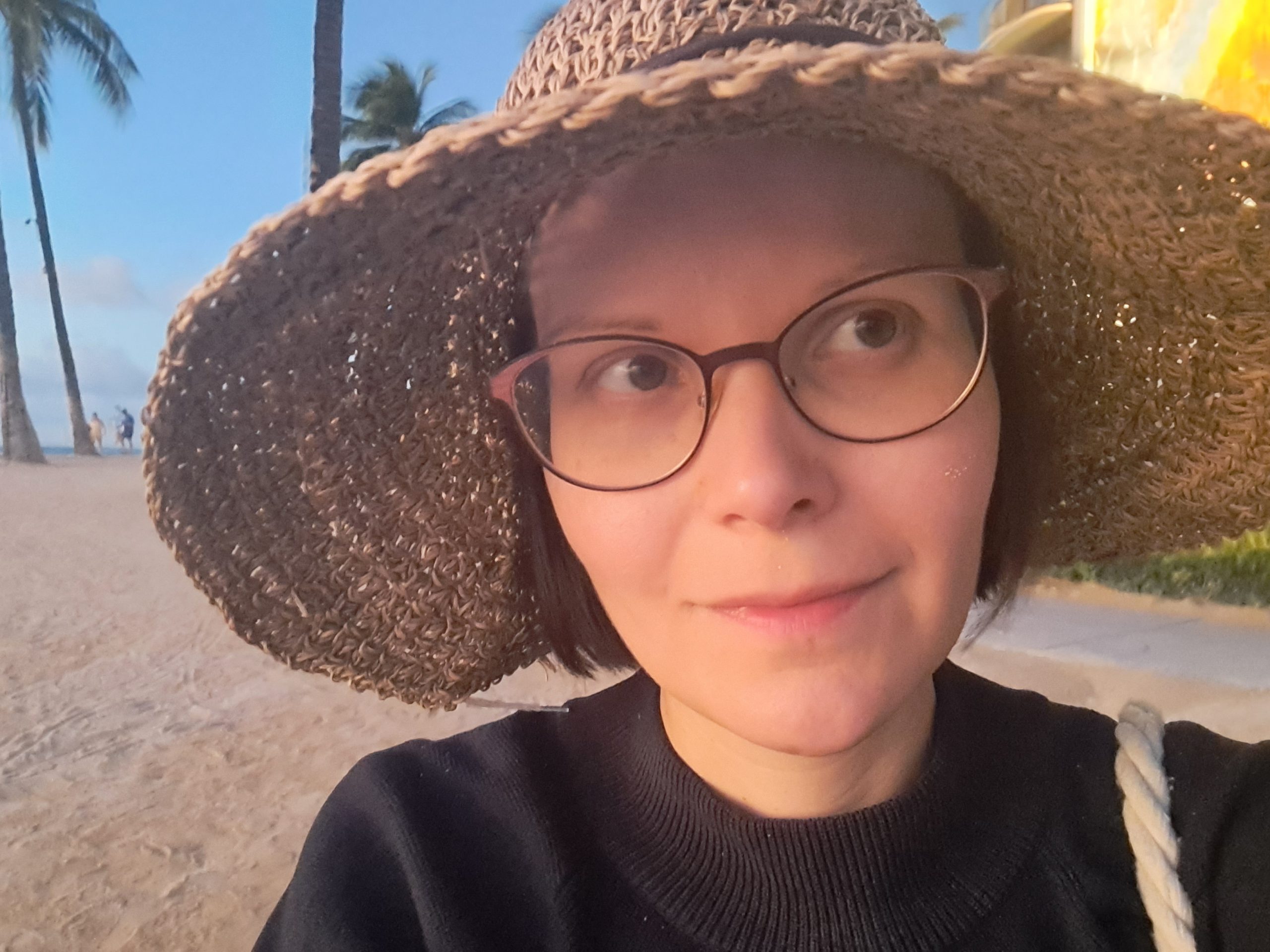
Meet Dr. Tiina Salmi
What got you into superconductivity? How did you become interested in this field?
By chance. The story starts from
the Erasmus exchange year that I had in Italy. I was studying Biomedical
engineering, and took there classes from the Neuroengineering program. For the
first six months my Italian was so poor that I was not able to understand
anything at the classes and studied mainly from the photocopied handwritten
notes of my very kind classmates. I remember clearly the day when I was reading
from those about the physical principles behind medical imaging that I got so
enchanted by modern physics. This inspiration changed my live, and I focused on
medical physics for the rest of my degree and applied to CERN, “The Mecca of
Science”, for Summer job. It was like the best summer ever, and during it I
made an application for the CERN technical student program, thinking about a
MSc thesis project in the medical imaging field. However, I got selected to a
superconducting magnet quench protection design project. After reading a bit
about quench I got very excited about the topic. After completing the MSc, I
had a choice between a PhD in neuroscience or with superconducting magnets… It
was a tough choice between two too good options, but finally it was the
experimental lab work that we did during my last months at CERN, and maybe the
unconscious pull of San Francisco, that made me select to stay in the field.
And since that, at every cross-section, I have selected to stay!
What is your personal interest in the COST Action?
My background is in accelerator magnets and quench protection. I would love to work in the future with energy systems and if possible, bring my own contribution to the desperately-needed greener energy transformation. I hope this network would open some doors for me and my team to practically participate in this field, and in general support this endeavor.
What is the topic of your research and what are your future plans?
I am leading a small team at
Tampere University, and together we are looking into different aspects of
superconducting magnets, both LTS and HTS: Quench protection, mechanical
characteristics in HTS tape, HTS magnet design, winding, and testing
technologies. We are also collaborating with other Finnish research groups,
international partners, and Finnish companies to explore how findings from more
or less neighboring fields could be applied to magnet technology (additive
manufacturing, intelligent condition monitoring, advanced design methods, ..).
The future plan is to continue with these research topics and focus the
obtained experience also to application(s) in the field of energy systems.
Curiosity bonus: how do you spend most of your time when you are not in the lab/office?
This one is easy. After having my first baby one year ago, I spend all my free time at home with my family!
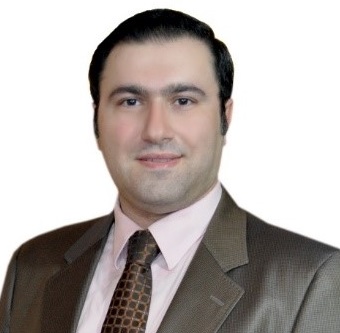
Meet Dr. Mohammad Yazdani-Asrami
What got you into superconductivity? How did you become interested in this field?
I came across the word “Superconductivity” at the end of my MSc study, when I heard about superconductors, and their potential to contribute to fabricating electrical devices with lower losses. Honestly, at that stage, I felt that superconductivity is a “magical technology” which could change the future world in electrical engineering.
I remember it happened when a lecturer of my MSc course shared a fascinating story about how the future of electrical engineering will be shaped by advancement in “battery/energy storage” technology and implementing “superconductors” for power applications. Today I should say that he was quite right in foreseeing the future. That point made by the lecturer motivated me to search about superconductivity, obviously by reading some news at that stage, as a MSc student. This was when I found that superconductivity and cryogenic engineering will go hand in hand.
Then, I did my PhD on superconducting transformers which made me realise the challenges related to the implementation of superconducting technology for power and energy applications. After that, I was very lucky to work under the supervision of Dr. Mike Staines, a senior scientist at the Robinson Research Institute in New Zealand on developing a fault-tolerant current-limiting superconducting transformer.
What made me truly interested in superconductivity is actually the experience of working with Mike, who is a very experienced, intelligent, knowledgeable researcher, and enthusiastic physicist and he used to come to work every day with new great questions. The passion that I experienced during working with him on that transformer project to find the answers to our scientific questions, made me really interested in superconductivity. I considered him as my role-model and I will always remember his advice: “Always ask why?”. We cannot be good researchers, either scientists or engineers, if we don’t have questions, and of course, the right type of questions.
What is your personal interest in the COST Action?
As a researcher within the superconductivity community, I am keen to contribute with the unique expertise of my group to the great mission of advancing the energy transition by using applied superconducting technology. That is the strong reason that made me interested in contributing to the Cost Action.
Then, I would say networking is another major reason that makes me participate in the COST Action program, CA19108. I am very interested in shaping future collaborations with other excellent professors, researchers, and engineers from the EU on the topics of interest.
I am leading the research activities in my group (Propulsion, Electrification & Superconductivity group) and laboratory in the University of Glasgow, UK, since 2022. Contributing to and participating in the Cost Action CA19108 will bring great opportunities for my group to establish relations and new collaboration. It did work for my group, and we started interesting collaborations with European researchers and universities. You can check and download one of these collaborative outcomes in the COST action CA19108 framework using this link.
Superconductivity, particularly the large-scale power application community, is a fairly small and young community compared with other well-developed technological communities within electrical and mechanical engineering. There are a few research groups around the world who work on my field of interests, let’s imagine them as some separated islands. Programs and initiatives such as COST Action will help us, groups in the EU, to come together and investigate different means and ways of collaborations; if successful, we will become like some linked islands rather than separated ones.
I am also contributing to the Cost Action CA19108 activities under WG2 as a subgroup leader on “data-driven modelling of superconductors”. If you want to join us on this topic under this subgroup, please contact me via email.
What is the topic of your research and what are your future plans?
I would categorise my research interests under three main caps:
● cryo-electrification of aerospace and other transportations: Actually, I created the word, and then many other researchers referred to it as well, “cryo-electrification.” It is a type of electrification enabled by cryogenic engineering and superconducting technology. High current carrying capacity and low loss features of commercial superconductors together with liquid hydrogen and gaseous helium as cryogenic coolant/cryogen will enable many electric transportation applications especially electric aviation. In our group at the University of Glasgow, we are interested in AC/DC distribution networks, propulsion systems, and protection solutions using superconducting technology.
● large-scale superconducting devices for terrestrial and power grid applications: in our group at the University of Glasgow, we are devoted to the design, development, and modelling of superconducting transformers, cables, and fault current limiters for renewable energy system applications such as offshore and onshore wind farms.
● Artificial intelligence and machine learning techniques for superconductivity: our group at the University of Glasgow are devoted to developing intelligent models and systems for automated modelling, fault detection, quench detection, and finding new types of superconductor materials, etc.
I would be more than happy to collaborate with other researchers interested in the abovementioned fields of research. For more information regarding my research interest and expertise, please visit my homepage.
If interested in shaping new collaboration, please contact me using my institutional email address.
Curiosity bonus: how do you spend most of your time when you are not in the lab/office?
In my spare time, usually over the weekend, I visit public parks as I am fan of long walks. I usually do 20 km walks twice a month. Glasgow is the home to many beautiful public parks.
In spring and summer, I spend my holidays in some cool, and beautiful villages around Loch Lomond, which is the largest lake in the UK. Scotland is one of the most beautiful countries in the world, given the beautiful highland and islands it has.
I would like to use this opportunity to invite all our colleagues to visit Scotland and enjoy its beauty. We, in the superconductivity group at the University of Glasgow, would be more than happy to host you as a visiting researcher/academic.
Also, I have been a huge fan of watching movies for more than 20 years now. I have recorded and rated all of my watched movies (above 3000). So, I like to go to the cinema whenever a movie of interest is on the silver screen.

Meet Dr. Nicolò Riva
What got you into superconductivity? How did you become interested in this field?
In 2013 I had the unique opportunity to visit CERN. There was a tour guided by an Italian mechanical engineer. Not only he was very knowledgeable, but very devoted and enthusiastic about his job… He was a magnet designer (dipoles and quadrupoles) focused on the mechanical aspects… I won’t spend too much time on the details, but I must stress that he was exceptional at conveying his passion to us. Nothing to do with superconductivity specifically, just his passion for science and the fact that even an apparently minor contribution could significantly impact the development of a project (or a person).
After the visit I had these random words such as “superconductors”, “quench”, “colliding beams”, “superfluid”… How were they linked and actually…what do they mean? I was really interested in these topics but also confused. I decided that this would be my main subject of study. I got in contact with INFN Lasa and there I found good mentors that introduced me to this topic… Since then have been surrounded by incredible coworkers and memorable supervisor and mentors… Because of “the people I met” and are in this field, I am VERY motivated to further follow the academic path and further research in applied superconductivity.
What is your personal interest in the COST Action?
Again: People! Their personalities, their impact on research and therefore networking! The COST Action itself is a unique occasion to increase the visibility of our own research to a wider community, but it also provides contacts and expertise that may dovetail our interest and goals (both professional and of personal growth), allowing all levels of researchers (from PhDs to Emeritus) to connect and exchange ideas beyond borders and outside the conventional international conferences. Therefore, I am trying my best to foster all sort of connection and interdisciplinary ideas within WG2!
What is the topic of your research and what are your future plans?
I am currently a PostDoc at MIT, collaborating with Type One Energy (TOE) and Commonwealth Fusion Systems (CFS) on magnets for fusion (e.g. SPARC, STARBLAZER).
My task is to evaluate the risks in the use of REBCO HTS for fusion magnets using numerical simulations and experiments. I obtained a Ph.D. in Electrical Engineering for Applied Superconductivity at EPFL and in collaboration with KIT and PM. My work is committed to the study and the scientific communication of superconductivity and its application to power and transportation.
What’s next? Who knows… I believe our future is to tightly collaborate with industrial and private partners to further accelerate the penetration in the market of HTS and learn new applications.
Curiosity bonus: how do you spend most of your time when you are not in the lab/office?
Before pretending to be a physicist I pretended to be a musician 😉
Therefore, you will find me somewhere playing piano or trombone…
However, because we spend WAY too much time sitting down on our “thoughts and laptops”, I also do a lot of sports (running, bicycle, swimming,…) to steam off and relax!

Meet Dr. Tara Benkel
What got you into superconductivity? How did you become interested in this field?
I saw a superconductor for the first time when I was a teenager, probably 17 years old. I was studying in the years following my baccalaureat when a professor outside of our school came to give a presentation on superconductivity. This was now a long time ago, so I only mostly remember an enthusiastic professor swinging a bulk on a curved rail of
magnets. It seemed magical, but at that time, I had no idea that superconductors would become part of my everyday life.
It was only later, in 2013, that
I actually worked for the first time with REBCO coated conductors during an internship thanks to one of my dearest professors, Prof. Pascal Tixador. I just fell in love with everything; interacting and learning from so many amazing people, doing something different and learning new skills everyday and more importantly the perspective of HTS seemed endless.
What is your personal interest in the COST Action?
The first time I heard about the COST Action, I was truly impressed and wished that I could be more involved. I believe that the fastest way to new ideas is through teamwork. Being able to bring together so many people from so many different backgrounds and from everywhere in the world is truly amazing and inspiring. I am mostly looking forward to being involved in collaborations on numerical modelling, but I am also happy to be useful anywhere I can be!
What is the topic of your research and what are your future plans?
I have studied to become an electrical engineer and started mostly as an experimentalist but became quickly more focused on numerical modelling. So far, I have mostly worked on REBCO coated conductors for high field magnet inserts, for machines for electrical and hybrid airplanes and for confinement magnets for fusion reactors. Having now worked both for public and private entities, I am starting to work through my recently incorporated company so I can have a healthier balance between my professional and personal life and hopefully be more involved in public research as well as working for private entities.
Curiosity bonus: how do you spend most of your time when you are not in the lab/office?
I try to spend as much time as possible with my family especially my young daughter, so the answer to this question is probably anywhere and everywhere to show her the world! Having a child is really life-changing and it makes me see and think about the world through her fresh eyes. I want to actively work so that her generation and the followings can live on an amazing planet.
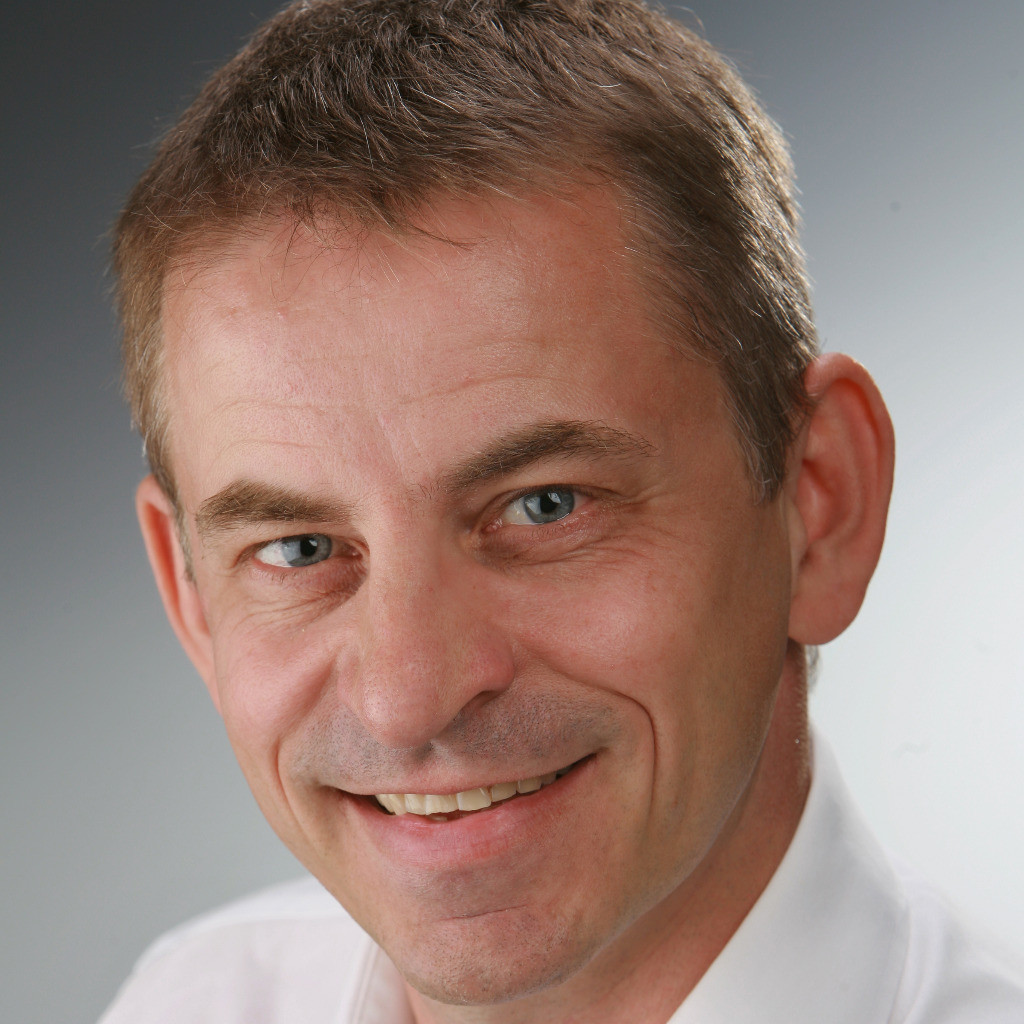
Meet Dr. Markus Bauer
What got you into superconductivity? How did you become interested in this field?
My first contact with superconductivity was during the end of my diploma thesis at the Technical University of Munich. I studied the growth of YBaCuO thin films on various single crystalline substrates using scanning tunneling and atomic force microscopes which just became available as commercial products at that time. During the
thesis the focus shifted towards coated conductors. We already used a process called reactive thermal evaporation to deposit high quality thin films on large single crystalline substrates like sapphire, YSZ or even silicon wafers. My topic was to find a method to use the same process to coat metal tapes. A bit by chance I succeeded to deposit biaxially textured MgO buffer layers with the so-called inclined substrate deposition and also the superconductor onto the buffer layer with reasonable quality.
I think part of the fascination of working with superconductors, which I still feel today, are the moments of excitement when you turn up the current and see that the sample really is superconducting and shows no resistance. Then you turn up the current further and there is still no resistance until you know: Yes, a new record sample!
What is your personal interest in the COST Action?
I am participating in the COST Action for several reasons. So far, there are only a few applications of HTS that have made the leap from prototype to real product. I believe that the potential is much greater and that we all need to work together to achieve this goal. The COST Action is a great way to foster this collaboration. It also
encourages young researchers to collaborate with colleagues at other institutions, which is equally important. Finally, the focus on the energy transition is an important aspect for me, as it is crucial for our future.
What is the topic of your research and what are your future plans?
I myself am not currently involved in research, but I follow developments in this field with great interest. I really enjoyed being involved in the development of the EcoSwing generator a few years ago. In my opinion, the superconducting coils we developed at that time proved that this is a robust technology, not only for wind generators. Therefore, I would be happy to follow up on this in the future and develop applications when the opportunity arises.
Curiosity bonus: how do you spend most of your time when you are not in the lab/office?
If I am not in the office, I am happy to spend the time with my family and, actually, there is also always something to fix at home, or do in the garden. Or I grab my running shoes and go jogging or use the bike to stay fit.

Meet Dr. Antonio Morandi
What got you into superconductivity? How did you become interested in this field?
The fault got me in superconductivity! More in particular, as a student in electrical engineering during the late 1990s, I was obsessed by the problem of the fault in electric power systems and, (what a perfect matching), I was offered a Master’s thesis on superconducting fault current limiters by my Professor Francesco Negrini. I saw the light! The thesis was in the framework of an international collaboration and had to be done in Japan, so I found myself catapulted into the Prof. Nitta laboratory at the University of Tokyo. What a magic time! Dealing with fascinating resistanceless materials during the day and with the fascinating Japanese metropolis outside work hours. I still feel the need to thank Professor Nitta for hosting me. Since then, thanks to their exceptional physical properties, superconductors have established in my view as the solution for the transition to sustainable energy and transportation systems, through compact and highly efficient power cables, effective grid protection and energy storage devices, and compact and lightweight rotating machines.
What is your personal interest in the COST Action?
Back in 2019 when I started to support our chairman, Joao Pina, in preparing this adventure I had no precise idea of what we were embarking on. Today, after three years of the Hi-SCALE COST Action running, I can tell with no doubt that this is one of the best professional experience of my life. When, talking to students just returning from a short term scientific mission or from a school I hear “we have learned a lot, and we have had a great time too!” this gives me the feeling that something significant was achieved and good basis for the future were posed. Cooperation, especially in the case when it does not completely fall within our own scientific comfort zone, is essential to progress, and COST is the nursery of this progress.
What is your biggest achievement?
Having matured a know-how in superconducting technology for electric power grid, which allows me to understand the potential and, sometimes, the limits of this technology, is my achievement. Based on this know-how I have contributed, through the involvement in national and international research projects and through industry collaboration, to the prototyping of superconducting power apparatus (fault current limiters, SMES and cables) and to the development of modelling and design tools. I also play service roles for our community by participating in the board of scientific society and in international scientific programme committee of conferences, and by serving as an editor for one of our journals. I am the vice-chair of this cost action and I am also co-chairing the EUCAS 2023 conference which, no fear of exaggerating, looks to me like climbing the Mount Everest.
Curiosity bonus: how do you spend most of your time when you are not in the lab/office?
Smiling
(and I do smile in lab/office too).
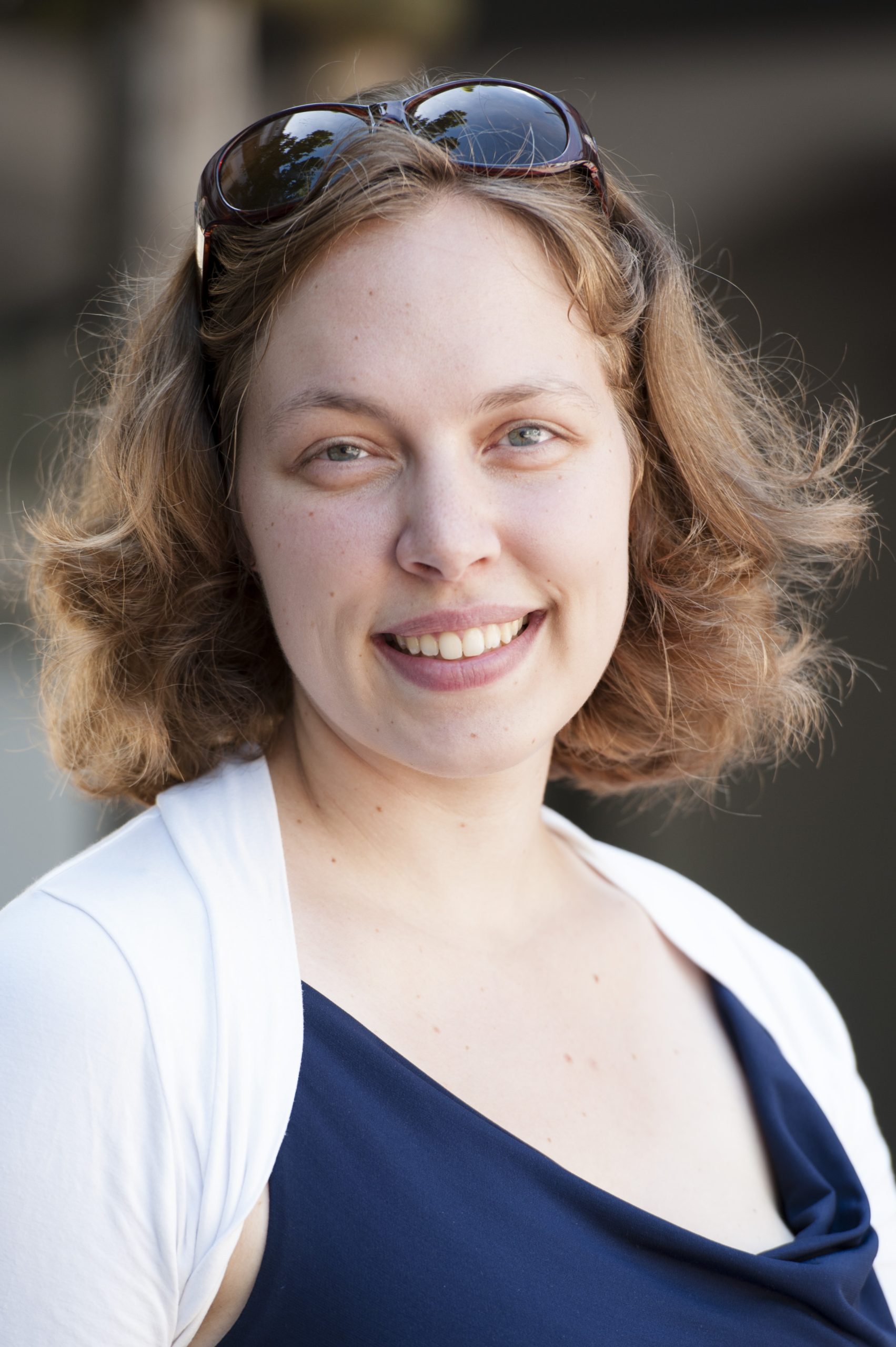
Meet Dr. Cornelia Hintze
What got you into superconductivity? How did you become interested in this field?
I wanted to work in superconductivity since I first met the concept at University. A friend had a friend who had done an internship at a superconducting company. As at that time I was looking for an internship myself, and this company happened to be near Munich, where my partner was at that time, I applied. I did a 4 month internship at THEVA, I returned as an engineer after my Masters one year later, and with a small interlude after PhD, child, and a 1.5 years of working in optics, again in 2019. I think it is the closest an engineer can get to doing magic: having no resistivity, perfect diamagnetism – it is like breaking the laws of physics, which of course it isn’t, but it definitely is the coolest material ever.
What is your personal interest in the COST Action?
I think anything furthering the move towards superconducting industries is an important action towards combatting climate change. The advantages of higher efficiency should be self-explanatory, but they are not and I am glad there are people who are promoting this.
What is your biggest achievement?
Developing the first High-temperature superconducting stellarator magnet for a QI stellarator reactor!
Curiosity bonus: how do you spend most of your time when you are not in the lab/office?
With my children!
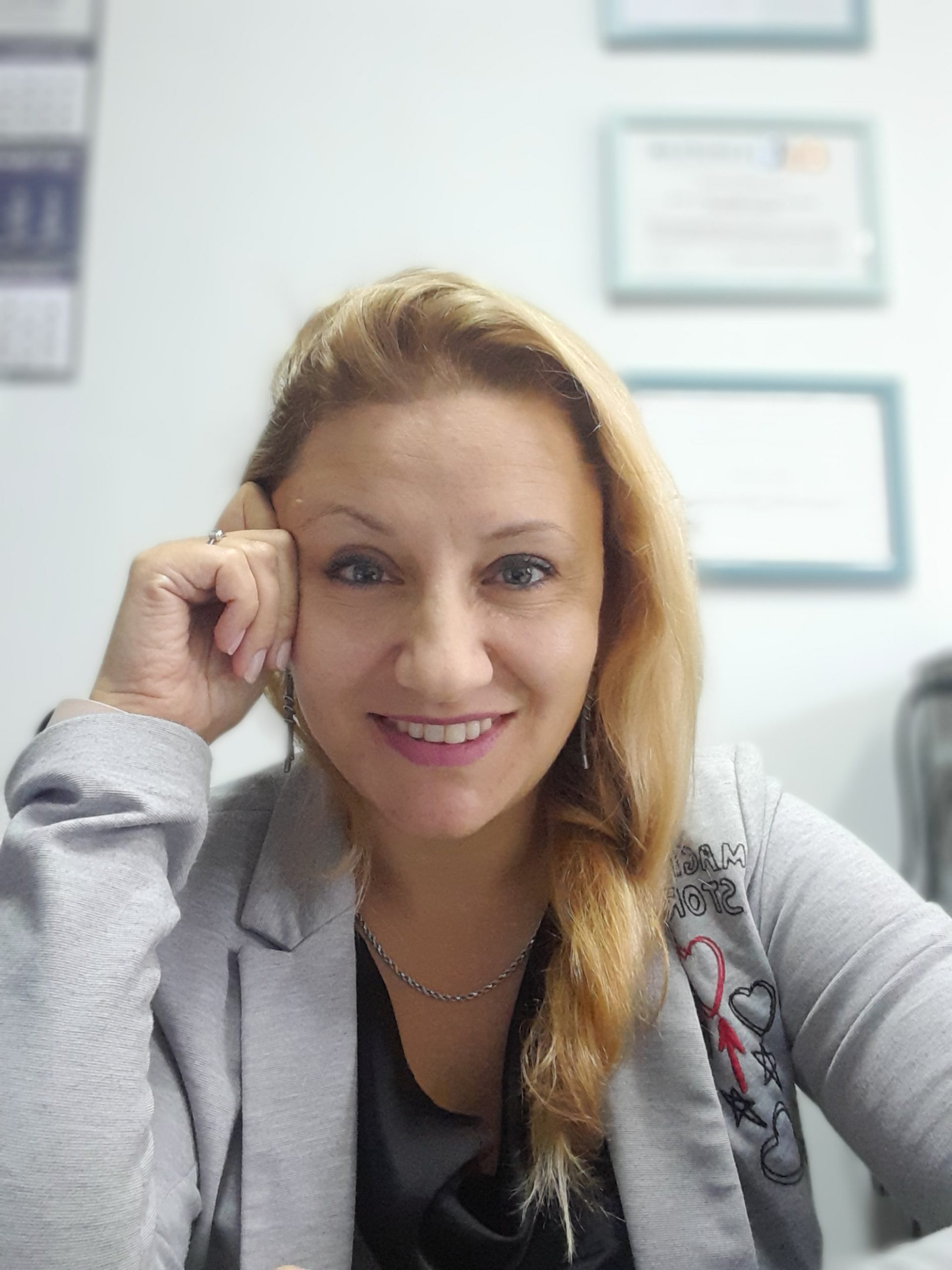
Meet Dr. Sanja Milošević Govedarović
What got you into superconductivity? How did you become interested in this field?
I learned about superconductors during my time at university, and it was just as impressive then as it is now. Although I pursued a scientific career in another field, my interest in superconductivity never waned and I kept up with the latest advancements in the field. I maintained contact with a group at my institute that was working on SQUID instrument, and we had plans to incorporate superconductive materialsinto our measurements.
Then, the HI-SCALE Action came along, and it was actually my mentor who discovered it and encouraged me to join. I applied eagerly, seeing an additional advantage in the fact that the COST was based on the material I had been working on for years. Synthesizing and modifying magnesium-based materials to tailor them for specific applications is my expertise, so I intended to apply this knowledge to superconductivity.
Unfortunately, a series of circumstances unfolded thereafter, leaving me as the sole remaining enthusiast for superconductivity. Additionally, the instrument malfunctioned. I might have given up if it weren’t for the ongoing COST Action. Currently, this COST initiative is my driving force, and I hope to integrate superconductivity into my future work, as well as to inspire students and colleagues to join me in this pursuit.
What is your personal interest in the COST Action?
Thanks to the COST initiative, I’ve had the opportunity to meet eminent experts in the field of superconductivity who are open to collaboration. My plan is to draft a project proposal aimed at assembling a team of scientists and PhD students, with the goal of initiating work in this field from scratch. Essentially, I aim to establish a chapter dedicated to superconductivity within my institute, and dare I say, within my country as well. To the best of my knowledge, there is currently no active research focused on the practical synthesis and application of superconductors in Serbia.
What is your biggest achievement?
The focus of my research lies in solid-state synthesis andmaterial modifications, employing techniques such as ion-beam treatment,mechanical milling, and doping to tailor materials to specific applicationrequirements. While my primary scientific research has revolved around materials for energy storage, my interests extend to environmental protectionas well. As mentioned, I intend to assemble a group of colleagues who share my enthusiasm for this field, with the aim of potentially introducing lectures andpractical classes at both my institute and home faculty. My next objective isto draft a project proposal to facilitate this initiative.
Curiosity bonus: how do you spend most of your time when you are not in the lab/office?
Periodically, I participate in science popularization fairs with the goal of educating abroader audience and sparking interest in science, particularly among young people. Additionally, I occasionally visit schools and deliver scientific presentations within my institute as part of my outreach efforts.
Another passion of mine is cosmology, and I aim to explore connections with this field in the future. However, since joining the COST Action, I have taken two maternity leaves, during which I have dedicated most of my time outside of the office tocaring for my two children.
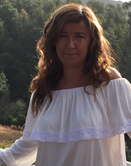
Meet Dr. Anabela Pronto
What got you into superconductivity? How did you become interested in this field?
My first contact with the superconductivity field started in 2001 through Professor Leão Rodrigues, head of Electrical Machines and Energy area in Electrical Engineering Department of FCT NOVA (my chief), who was invited to collaborate in an European project named Advanced Rotating Electrical Machines Exploiting High Temperature Superconducting Components (Acronym, Supermachines).This project allowed me to participate in two superconductivity schools and to know some of the best experts in the field. Based and driven by these contacts and experience, I decided to make my PhD research work related to power transformers using high temperature superconductors.
What is your personal interest in the COST Action?
My main interests in our COST Action is to update/improve my knowledge particularly in superconductivity power applications, and know and collaborate with experts in superconductivity field in order to develop networking and to contribute to the dissemination of superconductivity among possible stakeholders and also common citizens.
What is your biggest achievement?
In our research group we are particularly interested in superconductivity for power applications, namely the improvement and use of superconducting fault current limiters in the electric grid, the modelling and measurement of AC losses in HTS tapes, including the optimization of joint processes. Recently, myself in collaboration with our Materials Engineering Department, we have made several YBaCuO samples using 3D printing techniques with good magnetic characteristics, and presently we are testing HTS inks. So, now we are just waiting for these results. Beside “pure” superconductivity, my research work interests include also magnetic materials characterization specially for electrical power devices, but including their behavior at liquid nitrogen temperature because this will happen for some HTS power applications.
Curiosity bonus: how do you spend most of your time when you are not in the lab/office?
Most of my free time is spent at home with my family, of course, but also with my cats and dogs because I have a small shelter in our own house. So, I like to dedicate my free time taking care of them and their space, and to join the family and go for a walk with our dogs in the countryside.
